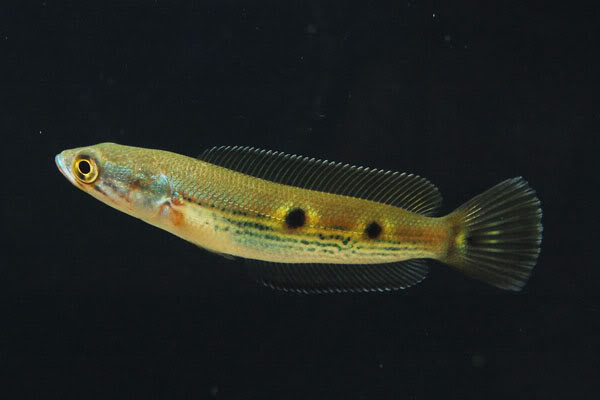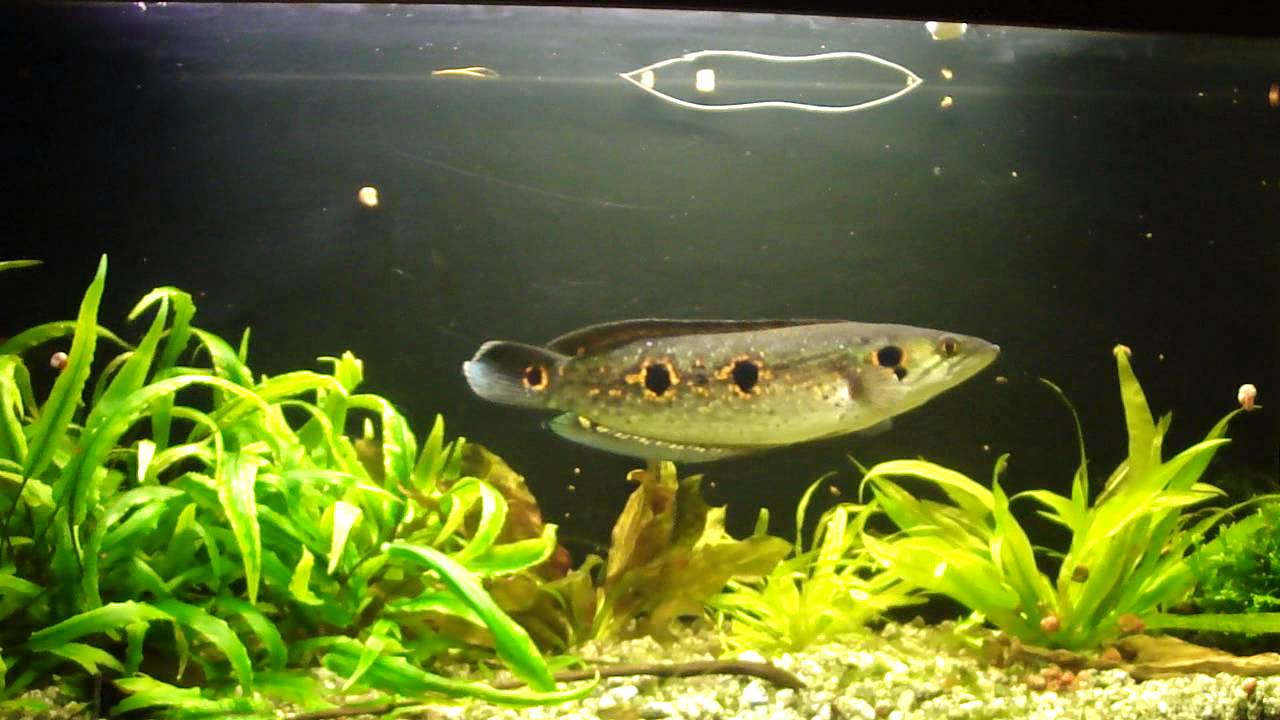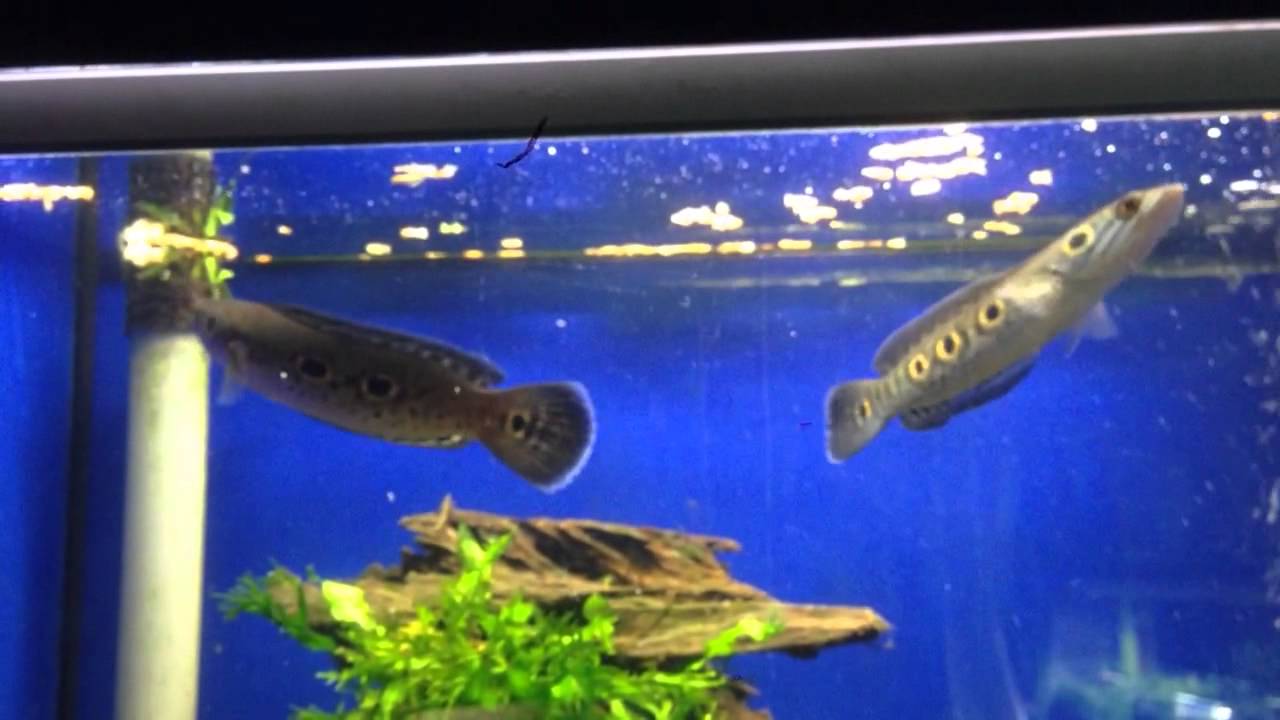
Channa pleurophthalmus
FAMILY
Channidae
TAXONOMY
Ophicephalus pleurophthalmus Bleeker, 1851, Bandjermassing.
OTHER COMMON NAMES
Indonesian: Kerandang.
PHYSICAL CHARACTERISTICS
Total length 15.7 in (40 cm). Body is distinctively compressed
laterally and quite deep compared to other snakeheads, has
moderately large scales (LL= 49–55), large canine-like teeth on
the upper and lower jaw, and patch of small scales near the tip
of the underside of the lower jaw. Body grayish with scattered
small black spots and several orange or orangey red-rimmed
black ocelli, yellowish black to gray pectoral fins, and a single
ocellus on the gill cover and middle of the caudal fin.
DISTRIBUTION
Islands of Sumatra and Borneo (western and southern portions),
Indonesia.
HABITAT
Usually lowland, slow-moving murky rivers.
BEHAVIOR
Not known to be capable of terrestrial movement.
FEEDING ECOLOGY AND DIET
Nothing known; presumed to be a predator, feeding on fishes
and other small aquatic animals.
REPRODUCTIVE BIOLOGY
Nothing known, but like other medium-to-large snakeheads, is
probably a bubble nest builder.
CONSERVATION STATUS
Not threatened.
SIGNIFICANCE TO HUMANS
Marketed as a food fish within its
DISTRIBUTION
, also quite popular
as an aquarium fish.
Other popular Animals
Photo Gallery of - Ocellated snakehead





 Animalia Life
Animalia Life